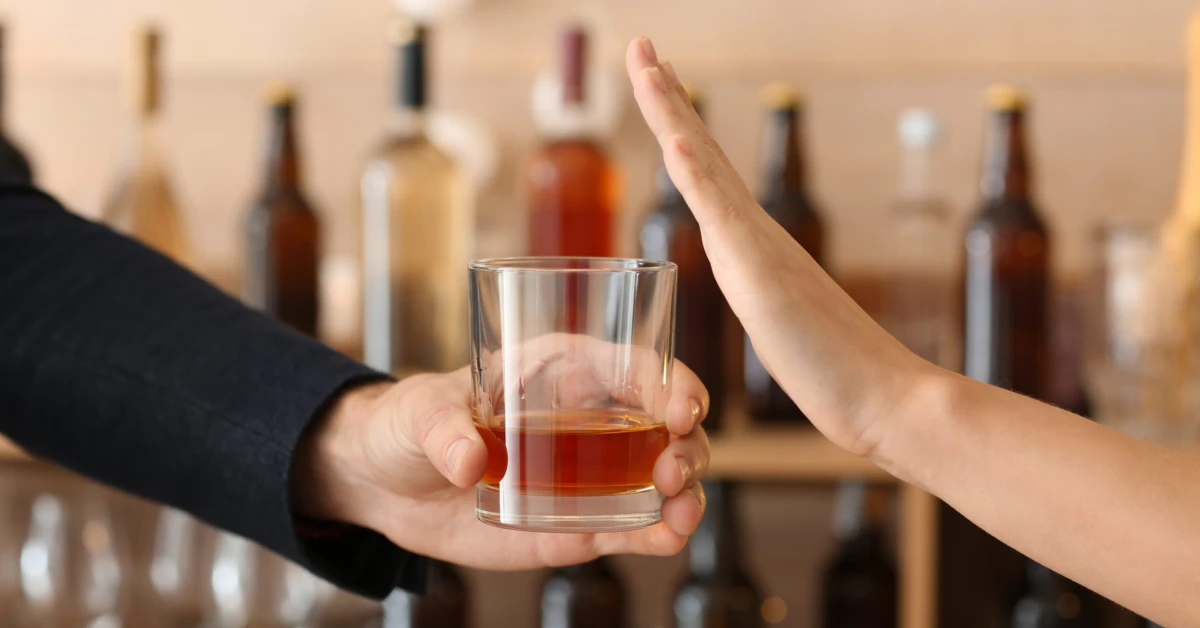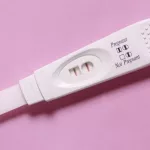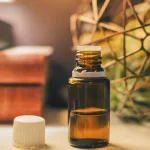Real talk: “Moderation” isn’t a science experiment
Let’s imagine you’re at a work event, and someone puts a glass of pinot noir in your hand. “It’s good for your heart,” they’ll say. But is it? Spoiler: Maybe not. Drinking, in any amount, affects your brain, body, and long-term health in ways we’re only beginning to understand. So where does that leave us with “safe” limits? Dom Orejudos, a health policy advisor from Australia, once said: “The safest amount is none.” Not the quote we millennials or Gen X-ers wanted to hear, but… the science checks out.
Understanding “Safe” Alcohol Consumption
What even is a standard drink?
The U.S. and other countries don’t all use the same measuring stick for alcohol — and that alone screws up the data. A standard drink in the U.S. contains 14g of pure alcohol. In Australia and the UK, that standard sits at 10g. Liquor in the U.S. sounds stronger, right? Except nobody tells us that on bottle labels.
Don’t let your eyes outsmart your liver
We often think we had “just a glass or two,” but what we pour at home could be 2.5 standard drinks. A 5-minute study? According to a NIAAA alcohol study, the term “moderate” gets interpreted so loosely, it practically dances in the blurry zone we call guilt from the wine that went down a little too late.
Regional drinking guidelines: Just how much is too much for you?
| Country | Weekly Limit (Healthy Adults) | Daily Limit |
|---|---|---|
| USA | 2 drinks/day (men), 1 drink/day (women) | Not specified, but heavy uses defined per NIAAA |
| Australia | 10 standard drinks/week | 4 standard drinks in a single session |
| UK | 14 units/week (average 6–7 standard drinks) | None — spread evenly |
| Canada | 10 drinks/week (women), 15 drinks/week (men) | 4 per occasion (max), else don’t |
See the trend? There’s no one-size-fits-all. But… the closer we look, the more experts point to a common phrase: The less you drink, the safer you are — even if you’re healthy, active, and making logic-based decisions. And as we’ll unpack below, alcohol and long-term harm have a more-than-you-think relationship.
Populations Who Should Avoid Alcohol — No ifs (or, well, alcohol)
The “zero risk is best” crew
Sure, a daily 1–2 drinks might feel “safe” for some. But for others, any sip raises the stakes. So who should skip the charcuterie?
- Under 18 years old? Not only a crime — but your brain is still building itself. One bad night doesn’t just mess with your sleep — it affects development health Aussies uncover.
- Pregnant or planning pregnancy? Shots of tequila wake you up — sunlight does that. Alcohol? It travels through your body to affect your baby’s brain, nervous system, and future potential linked with fetal alcohol spectrum disorder, pregnancy issues, and long-term harm. Alcohol-free dates, anyone?
- On medications? Learn What Actually Happens
Pop a painkiller and then a glass? Big mistake. Alcohol mixed with medication doesn’t just slow reactions — it can cause nausea, memory lapses, or worse. For example: Blood thinners (like Coumadin), certain antidepressants, and pain pills may not mix well with even small amounts. Healthdirect points to specific drug-alcohol combinations that both exacerbate symptoms and create special danger for chronic conditions like liver disease and hypertension.
Alcohol health risks: It’s not just your liver
Alcohol and cancer: What’s the catch?
To put it bluntly: Cancer doesn’t take days off. Even the smallest sips link to boosted risks. A CDC health bulletin confirms — and this isn’t opinion — that any alcohol intake increases the risk of mouth, throat, liver, breast, and colon cancer. For every 3.5 alcoholic drinks you take, your oral cancer risk rises 17%. Not cozy, but real talk.
Early signs your brain might be taking hits
Remember that one night in college when someone “blacked out” but laughed it up the next day? The brain remembers, even when you don’t. According to Alzheimer’s articles we love to hate reading, heavy alcohol use — and even moderate beer chugs — contribute to earlier-onset dementia, memory challenges, and possibly shrinkage in cognitive ability. Tragic, but also avoidable: Your brain doesn’t need alcohol to taste the joy in life. It just needs some mindful care. At any real age, the way your brain cells respond to high alcohol intake matters — so hold on to your wit without the wine.
Moderate drinking: Nowhere near the smooth operation you might think
A glass of wine is fine. An everyday glass of wine? Maybe not. You’ve heard the “one drink for ladies, two for men” framework. But the heartbreaking truth? A Mayo Clinic article revealed the grim truth: moderate occasional drinking reduces some short-term risks adult drinkers face — because of their hydration and nutrition — but still increases long-term cancer and dementia-related odds.
Older myths, new evidence: Is alcohol really helping your health?
Back in the 2000s, red wine got a free pass. It was the cardiovascular cure — right? Not so fast. Once larger studies broke it down, numerous meta studies showed that “heart health” benefits people used to hype up were largely overblown—and not connected to modest drinking levels when considering nutrition, fitness, and actual life expectancy data.
Safer drinking: Slower, smarter, not secret
Why tracking your alcohol intake (spoiler: You might not want to) matters
If you’ve poured a week’s guilt into a bottle of wine this Friday without a second thought, let’s break this down. The term “standard drink” doesn’t help your pour. Your experience with a familiar glass may amount to a study-shattering 3 drink-equivalents. Tracking is annoying — but worth it, even if you’re not someone who binge drinks at parties. Drink tracking games on apps can give you a clearer view (and save your last drink from creeping up on you).
Binge drinking? You should know how much you’re really consuming first
UK health authorities define binge drinking as more than 4 drinks for women and 5 for men — within 2 hours. But in the U.S., sticking to 14 grams per drink doesn’t always feel that way. Some cocktails? Easy 3–5 drinks in one glass. So what can we do to keep it balanced when peers or FOMO peer pressure kicks in? Here are some options we swear by:
- Alternate aloha water between your beers or top-ups.
- Track till you land at that soft limit: 4 per session seriously kills your buzz for next day (and years ahead).
- Make sure you’re never mixing hangovers with your work schedule — it’s tempting, but your body deserves better.
Special occasions? Here’s your cheat sheet
- Weddings: Slower drinking keeps your nervous system from working overtime — not just your liver.
- A first date: Carry or make your own nonalcoholic baseline — don’t affect your future to impress the future not-so-significant you.
- Free drinks night: Use strategic sips, not rushed gulps — the ballads of regret rarely age well.
Debunking the misconceptions
Putting the “healthy drinking” myth to rest
Still repeating the “wine is healthy” line you heard sophomore year? Let’s stop the music for a sec. A 2025 commissioned study found that past “light to moderate consumption” risks were relativized — because non-drinkers often were former drinkers battling liver or heart disease, skewing the comparison.
And cognitive health? A sneaky invisible marker that changes over time. Scientists at Australia’s Department of Health once rebuffed the data hiding behind “heart-friendly” buzzwords — proving that non-drinkers live longer, healthier lives than those opting for even moderate doses of alcohol. If your only goal is feeling “fine,” you’re not aiming high enough.
The drinking buzzkill you need: Health moves faster when youocus (unlike hangovers)
It’s not social murder. Building day-off drinks into your week changes your approach. Consider this: nearly 40% of people who cut down say they feel better because they sleep better, eat cleaner, and stop acting like a clown after three rounds of beer pong, skillfully dodging the comma sign.
What actual experts are saying
At this point, you might be asking: Should I keep the bottle in the fridge or throw it away entirely? Experts in fields from cardiology to Oxford University’s dementia research team try not to operate in absolutes — but they’re kind of forced to when the data insists: “Avoidance is the safest.”
Guideline creators? They’re actually following real-world science
New update in 2024 from Australia’s National Health and Medical Research Council reiterated the same benchmark: more than 10 standard drinks a week even increases dementia risks. So if you’re calculating how long you’ll be around to hang out with your future grandkids without memory challenges — that’s a brand-new health consideration that overlays every drinking habit you’ve ever inherited.
Red flags: These signs mean you’re drinking too much
- You’re using alcohol as a sleep aid — cue rebound sleeplessness later on (we’ve been there run time too long for a quick glass of vino to fix insomnia, not set it off).
- Your favorite times involve
Real talk: “Moderation” isn’t a science experiment
Let’s imagine you’re at a work event, and someone puts a glass of pinot noir in your hand. “It’s good for your heart,” they’ll say. But is it? Spoiler: Maybe not. Drinking, in any amount, affects your brain, body, and long-term health in ways we’re only beginning to understand. So where does that leave us with “safe” limits? Dom Orejudos, a health policy advisor from Australia, once said: “The safest amount is none.” Not the quote we millennials or Gen X-ers wanted to hear, but… the science checks out.
ADVERTISEMENTUnderstanding “Safe” Alcohol Consumption
What even is a standard drink?
The U.S. and other countries don’t all use the same measuring stick for alcohol — and that alone screws up the data. A standard drink in the U.S. contains 14g of pure alcohol. In Australia and the UK, that standard sits at 10g. Liquor in the U.S. sounds stronger, right? Except nobody tells us that on bottle labels.
Don’t let your eyes outsmart your liver
We often think we had “just a glass or two,” but what we pour at home could be 2.5 standard drinks. A 5-minute study? According to a NIAAA alcohol study, the term “moderate” gets interpreted so loosely, it practically dances in the blurry zone we call guilt from the wine that went down a little too late.
Regional drinking guidelines: Just how much is too much for you?
Country Weekly Limit (Healthy Adults) Daily Limit USA 2 drinks/day (men), 1 drink/day (women) Not specified, but heavy uses defined per NIAAA Australia 10 standard drinks/week 4 standard drinks in a single session UK 14 units/week (average 6–7 standard drinks) None — spread evenly Canada 10 drinks/week (women), 15 drinks/week (men) 4 per occasion (max), else don’t See the trend? There’s no one-size-fits-all. But… the closer we look, the more experts point to a common phrase: The less you drink, the safer you are — even if you’re healthy, active, and making logic-based decisions. And as we’ll unpack below, alcohol and long-term harm have a more-than-you-think relationship.
Populations Who Should Avoid Alcohol — No ifs (or, well, alcohol)
The “zero risk is best” crew
Sure, a daily 1–2 drinks might feel “safe” for some. But for others, any sip raises the stakes. So who should skip the charcuterie?
- Under 18 years old? Not only a crime — but your brain is still building itself. One bad night doesn’t just mess with your sleep — it affects development health Aussies uncover.
- Pregnant or planning pregnancy? Shots of tequila wake you up — sunlight does that. Alcohol? It travels through your body to affect your baby’s brain, nervous system, and future potential linked with fetal alcohol spectrum disorder, pregnancy issues, and long-term harm. Alcohol-free dates, anyone?
- On medications? Learn What Actually Happens
Pop a painkiller and then a glass? Big mistake. Alcohol mixed with medication doesn’t just slow reactions — it can cause nausea, memory lapses, or worse. For example: Blood thinners (like Coumadin), certain antidepressants, and pain pills may not mix well with even small amounts. Healthdirect points to specific drug-alcohol combinations that both exacerbate symptoms and create special danger for chronic conditions like liver disease and hypertension.
ADVERTISEMENTAlcohol health risks: It’s not just your liver
Alcohol and cancer: What’s the catch?
To put it bluntly: Cancer doesn’t take days off. Even the smallest sips link to boosted risks. A CDC health bulletin confirms — and this isn’t opinion — that any alcohol intake increases the risk of mouth, throat, liver, breast, and colon cancer. For every 3.5 alcoholic drinks you take, your oral cancer risk rises 17%. Not cozy, but real talk.
Early signs your brain might be taking hits
Remember that one night in college when someone “blacked out” but laughed it up the next day? The brain remembers, even when you don’t. According to Alzheimer’s articles we love to hate reading, heavy alcohol use — and even moderate beer chugs — contribute to earlier-onset dementia, memory challenges, and possibly shrinkage in cognitive ability. Tragic, but also avoidable: Your brain doesn’t need alcohol to taste the joy in life. It just needs some mindful care. At any real age, the way your brain cells respond to high alcohol intake matters — so hold on to your wit without the wine.
Moderate drinking: Nowhere near the smooth operation you might think
A glass of wine is fine. An everyday glass of wine? Maybe not. You’ve heard the “one drink for ladies, two for men” framework. But the heartbreaking truth? A Mayo Clinic article revealed the grim truth: moderate occasional drinking reduces some short-term risks adult drinkers face — because of their hydration and nutrition — but still increases long-term cancer and dementia-related odds.
Older myths, new evidence: Is alcohol really helping your health?
Back in the 2000s, red wine got a free pass. It was the cardiovascular cure — right? Not so fast. Once larger studies broke it down, numerous meta studies showed that “heart health” benefits people used to hype up were largely overblown—and not connected to modest drinking levels when considering nutrition, fitness, and actual life expectancy data.
Safer drinking: Slower, smarter, not secret
Why tracking your alcohol intake (spoiler: You might not want to) matters
If you’ve poured a week’s guilt into a bottle of wine this Friday without a second thought, let’s break this down. The term “standard drink” doesn’t help your pour. Your experience with a familiar glass may amount to a study-shattering 3 drink-equivalents. Tracking is annoying — but worth it, even if you’re not someone who binge drinks at parties. Drink tracking games on apps can give you a clearer view (and save your last drink from creeping up on you).
Binge drinking? You should know how much you’re really consuming first
UK health authorities define binge drinking as more than 4 drinks for women and 5 for men — within 2 hours. But in the U.S., sticking to 14 grams per drink doesn’t always feel that way. Some cocktails? Easy 3–5 drinks in one glass. So what can we do to keep it balanced when peers or FOMO peer pressure kicks in? Here are some options we swear by:
- Alternate aloha water between your beers or top-ups.
- Track till you land at that soft limit: 4 per session seriously kills your buzz for next day (and years ahead).
- Make sure you’re never mixing hangovers with your work schedule — it’s tempting, but your body deserves better.
Special occasions? Here’s your cheat sheet
- Weddings: Slower drinking keeps your nervous system from working overtime — not just your liver.
- A first date: Carry or make your own nonalcoholic baseline — don’t affect your future to impress the future not-so-significant you.
- Free drinks night: Use strategic sips, not rushed gulps — the ballads of regret rarely age well.
ADVERTISEMENTDebunking the misconceptions
Putting the “healthy drinking” myth to rest
Still repeating the “wine is healthy” line you heard sophomore year? Let’s stop the music for a sec. A 2025 commissioned study found that past “light to moderate consumption” risks were relativized — because non-drinkers often were former drinkers battling liver or heart disease, skewing the comparison.
And cognitive health? A sneaky invisible marker that changes over time. Scientists at Australia’s Department of Health once rebuffed the data hiding behind “heart-friendly” buzzwords — proving that non-drinkers live longer, healthier lives than those opting for even moderate doses of alcohol. If your only goal is feeling “fine,” you’re not aiming high enough.
The drinking buzzkill you need: Health moves faster when youocus (unlike hangovers)
It’s not social murder. Building day-off drinks into your week changes your approach. Consider this: nearly 40% of people who cut down say they feel better because they sleep better, eat cleaner, and stop acting like a clown after three rounds of beer pong, skillfully dodging the comma sign.
What actual experts are saying
At this point, you might be asking: Should I keep the bottle in the fridge or throw it away entirely? Experts in fields from cardiology to Oxford University ‘s dementia research team try not to operate in absolutes — but they’re kind of forced to when the data insists: “Avoidance is the safest.”
Guideline creators? They’re actually following real-world science
New update in 2024 from Australia’s National Health and Medical Research Council reiterated the same benchmark: more than 10 standard drinks a week even increases dementia risks. So if you’re calculating how long you’ll be around to hang out with your future grandkids without memory challenges — that’s a brand-new health consideration that overlays every drinking habit you’ve ever inherited.
Red flags: These signs mean you’re drinking too much
- You’re using alcohol as a sleep aid — cue rebound sleeplessness later on (we’ve been there run time too long for a quick glass of vino to fix insomnia, not set it off).
- Your favorite times involve drinking truths revealed — cognitive blackout drinks might not seem harmful in the moment, but they are a risk strategy short-term and long-term.
- You give yourself “round limits,” but then… rounds come back for secondsw, increasing your BAC more than you thought. Link to a BAC calculator might help you game your next real-world social event.
ADVERTISEMENTSaving face, without saving your drinking habits
Your drinking pattern might not match reality — level up
Here’s the slick logic: Following the same guideline while glossing over new evidence about alcohol and your health is problematic. You have two options:
- Stick with your patterns… while lowering the health risks by drinking less, using smaller glasses, and hydrating better (think of it as damage control for self-respect).
- Try the “zero-free days” alcohol consumption cycle, with mindful care. Don’t justify it with “Well I’ll just do a dry month!” — instead, do the collective good. Your cardiovascular and cognitive health will thank you long-term.
The science, your responsibility
Public health reports are clear: No level of alcohol is entirely free of increased health risks — including cancer and dementia. Even at low levels, you’re still at a slight heath edge. Pro tip: Understand that your genetics and lifestyle may raise your risk or shield you — but that’s not a betting game.
ADVERTISEMENTFinal thoughts
You can enjoy drinking without becoming a medical statistic — nobody sent us a bottle of champagne saying, “inline” toast ahead.” Alcohol isn’t “safe,” but it can be savored. Just know your habits. The more mindful you are about “how many drinks is safe” this week — the more you start being your own line-of-defence. Track your habits, play defense on rounds, and when you can… add some water doses to keep bodies, minds, and memories intact.
Did any of these revelations surprise you? How are your drinking limits stacking up against the newest study data? Comment below, DM thy thoughts, or challenge the world with your own tip if you like to argue about what’s “safe” faced with life-decade research on drinking guidelines, alcohol limits, and cancer risks. Just know: Your body, your mind — they deserve the best shot you can give them, especially when it comes to “safe” alcohol consumption.
Frequently Asked Questions
What defines safe alcohol consumption for healthy adults?
Why do drinking guidelines warn about alcohol and dementia?
Are there zero risks when following daily alcohol limits?
How do I track my alcohol intake effectively?
Should certain health conditions prevent safe alcohol use?


















Leave a Reply
You must be logged in to post a comment.